|
 Entoloma peralbidum Entoloma peralbidum
BiostatusPresent in region - Indigenous. Endemic
Images (click to enlarge)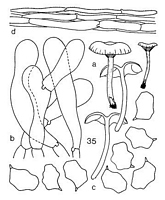
Caption: Entoloma peralbidum HK. (holotype):
a. carpophores. b. cheilocystidia. c. spores. d. cuticle. | 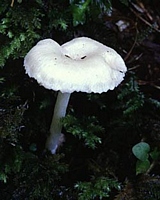
Caption: Entoloma peralbidum
Owner: Kaimai Bush | 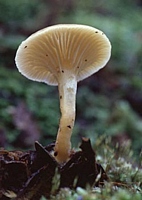
Caption: Entoloma peralbidum
Owner: Kaimai Bush | 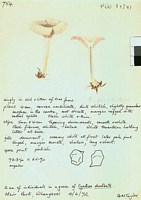
Caption: water colour
Owner: G.M. Taylor | 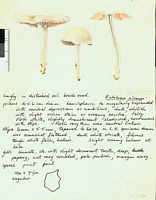
Caption: Watercolour
Owner: G.M. Taylor | 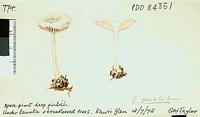
Caption: Watercolour
Owner: G.M. Taylor | 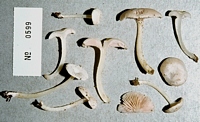
Caption: ZT599: Entoloma peralbidum
Owner: Egon Horak | 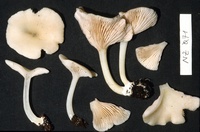
Caption: ZT9510, NZ-71
Owner: E. Horak: © Creative Commons Attribution-Noncommercial 3.0 New Zealand | 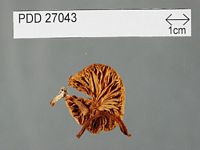
Caption: Dried type specimen
Owner: Herb PDD |
Article: Horak, E. (1973). Fungi Agaricini Novazelandiae I-V. Beihefte zur Nova Hedwigia 43: 200 p.
Description: Pileus
10-40 mm diam., umbilicate, margin always inrolled, never up-turned, pure white
when young later becoming pinkish, innately fibrillose, occ. tomentose at the
centre, dry, striate near the margin. Lamellae broadly adnate or decurrent,
sinuate, white, turning deep pink, gill edge white, fimbriate, densely crowded.
Stipe 25-50 x 3-4 mm, cylindrical, occasionally eccentric, white waxy or yellowish
when aged, dry, glabrous, but densely covered by a white weft near the base,
fistulose. Context white. Odor and taste acidulous.
Spores
9-11 x 6-7.5 µm, 6-angled. Basidia 35-40 x 10 µm, 4-spored. Cheilocystidia 40-80
x 12-18 µm, articulated, terminal cells clavate or lageniform, membrane thin-walled,
hyaline, pigment absent. Pleuro- and caulocystidia none. Cuticle a cutis of
repent cylindrical, pigmentless hyphae (6-12 µm diam.), membrane thill-walled,
and not gelatinized. Clamp-connections present.
Habitat: On
soil in forest or under shrubs. New Zealand.
Notes: According
to the descriptions E. peralbidum is related to E. albidum Murrill
and E. murrillii Hesler, both native in North America. The species from
New Zealand, however, is distinguished by its more robust habit, conspicuous
cheilocystidia and presence of clamp connections.
|